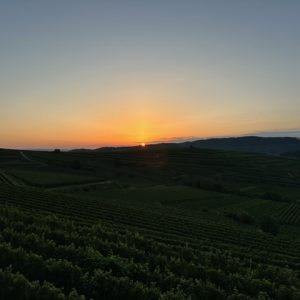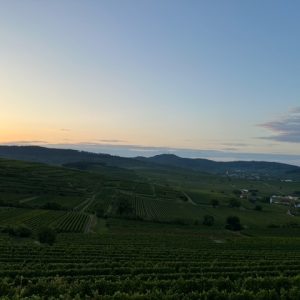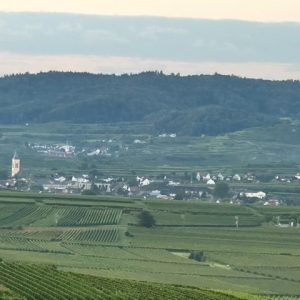Burkheim, Germany
Burkheim is near Freiburg, in the southwest corner of Germany, close to France’s Colmar and Switzerland’s Basel. It is a lovely village, dominated by beautiful medieval buildings.
Most significantly, Burkheim is located in the Kaiserstuhl, a range of hills of volcanic origin, the foundation for its wine culture. The first records of vineyards here date back to Frankish times (around 750 A.D.) when the very first terraces and vineyards were constructed. Other notable Kaiserstuhl villages include Oberrotweil, Achkarren and Ihringen.
Kaiserstuhl means literally “emperor’s seat”. It is said to date back to 994 AD, when King Otto III of Germany held court in the village of Sasbach am Kaiserstuhl, a few miles north of Oberrotweil.
The other foundation for the region’s wine culture is the borderline Mediterranean microclimate, with mild winters and warm summers. Kaiserstuhl has one of Germany’s warmest climates, rivaled only by that of Pfalz just to the north and across the Rhine. The vineyards of France’s sunny Alsace lie less than 30 kilometers away, due west.
For the intrepid wine walker, Burkheim is ideal, as it is tucked into vineyards which climb up the hills behind it. It was stinking hot on the day of my arrival, so I just wandered around town.
The next day I tackled my wine walk at 6.00 am. It was so beautiful to watch the sun rise across the landscape of vineyards, with the village of Oberrotweil in the distance. In fact, the local winemaking cooperative (Badischer Winzerkeller co-operative) has a nice, marked walking trail through the vineyards, which helped me clamber to the top of the vineyards.
The Kaiserstuhl is a unique viticultural district in Germany in that Riesling is not an important grape variety, and the region produces as much red wine as white. This is a response due to the relatively warm microclimate, and the volcanic soils. In the case of Burkheim, the main grape varieties for white wines are Pinot Gris (56 percent) and Pinot Blanc (10 percent), and for red wine Pinot Noir (34 percent).
The majority of Kaiserstuhl wine (about 90 percent) is produced by the large and well-regarded Badischer Winzerkeller co-operative, where I tasted wines from all three grape varieties. They were excellent – full-bodied, rich and intense, while remaining well-balanced. At the suggestion of one of the staff members, I also tried a chardonnay, which they use in small quantities. But it was not quite as good as the Pinots.
For newcomers to Kaiserstuhl like me, the big discovery is the quality of the Pinot Noir wines. As my wife is rather partial to red wines, I bought her two bottles and lumbered back home in my rucksack!





